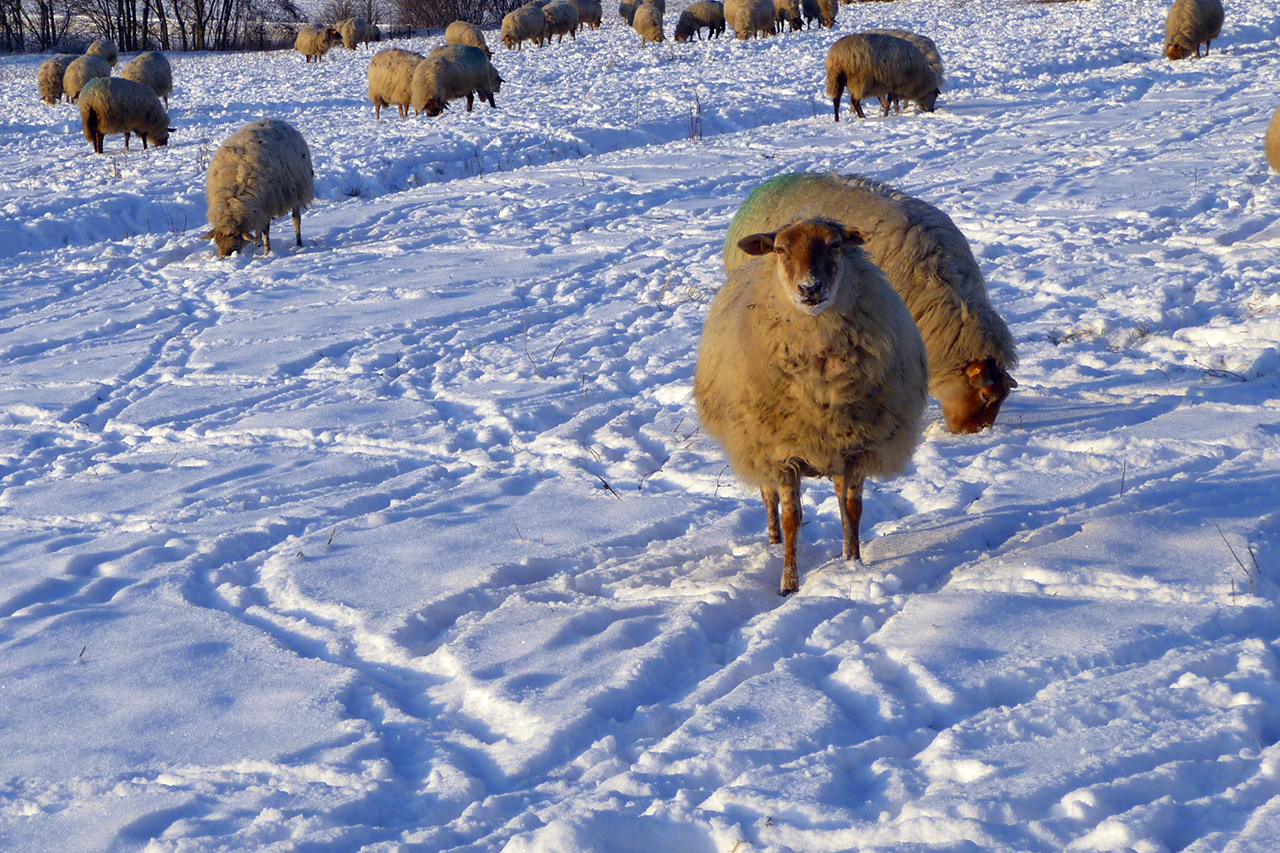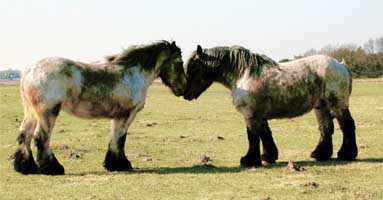Domestic Breeds

Large Breeds
Some high performance production breeds and popular companion breeds have a large population size. Interestingly enough, also for those breeds, genetic diversity often decreases due to have use of just few animals (especially the males). On a positive note, when large breeds get into trouble, their high numbers make it possible to selection against genetic problems. Furthermore these populations are likely to have a strong economic base for research needed to determine how to select or to find a DNA test against a recessive deleterious gene for example.
Rare Breeds
Due to being small in population size, genetic diversity decreases (due to random genetic drift). Less known is that the same forces present in large breeds, namely the use of only few males often have a more dramatic impact on diversity than the small population size does. Unfortunately, due to small population size, selection responses are much lower than in large populations. In fact, due to chance, selection response are sometimes even negative!
The (non)sense of selection
Artificial selection has been a major criterion for the success of Western agriculture. Though this process gave rise to health and high productive breeds like Holstein Friesians Cows. Most people do not realise that this process involved population wide numerous trait monitoring, advanced selection response predictions and full control over breeding decisions by one or few people.
In small populations, this is not possible! By most breeders, selection is seen as a strait forward activity: you look for traits and you select. Moreover most breeders believe that selection is a necessity: `if you do not select against problems, the breed will deteriorate.` Both assumptions are wrong. In fact, unmanaged selection is probably the major force for losing diversity within breeds, because fewer candidates are used in breeding. By adding selection-criteria, the pressure on genetic diversity even increases.
How to preserve a small population
Instead of selection against possible illnesses, in small population the main concern is increasing genetic diversity. The cheapest way is to following the four steps as presented on this website. Note, that there might always be exceptions to the rule, however in most cases, the decrease of genetic diversity is the largest threat.
A background story: Decline of diversity among domestic species
The number of domestic animals have increased tremendously during the last two centuries. The genetic diversity within breeds, however decreased in the last few decades. How come that diversity within domestic species declines? Three factors are involved:
1) introduction of breed-studbooks, which led to exclusion of domestic animals that did not belong to ‘a breed’;
2) preferential breeding of few specific high performance breeds;
3) preferential breeding with specific individuals, especially males within breeds due to increased mobility of breeders.

At least one domestic animal breed has become extinct each month over the past seven years, and around 20% of the breeds of the primary domestic animal species (cattle, goats, pigs, horses and poultry) are at risk of extinction.
In Europe, there used to be ‘natural’ local varieties of livestock animals. In African cattle for example, you can still find cattle belonging to no breed. Many animals there have locally adapted to a specific environment and often resemble each other in that certain region. In Europe of the previous centuries, these varieties have become breeds. During the last two to three-hundred years, studbooks were introduced for many livestock varieties turning them into breeds. Since that time the natural occurrence of variation between regions disappeared. Studbook-breeds have ‘outbred’, the local variants. Nowadays in Europe (and America), genetic diversity is only conserved in breeds per species. The problem nowadays is that many “old-fashioned” become extinct as well.
